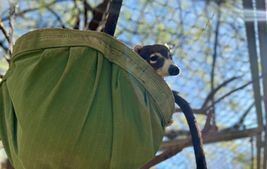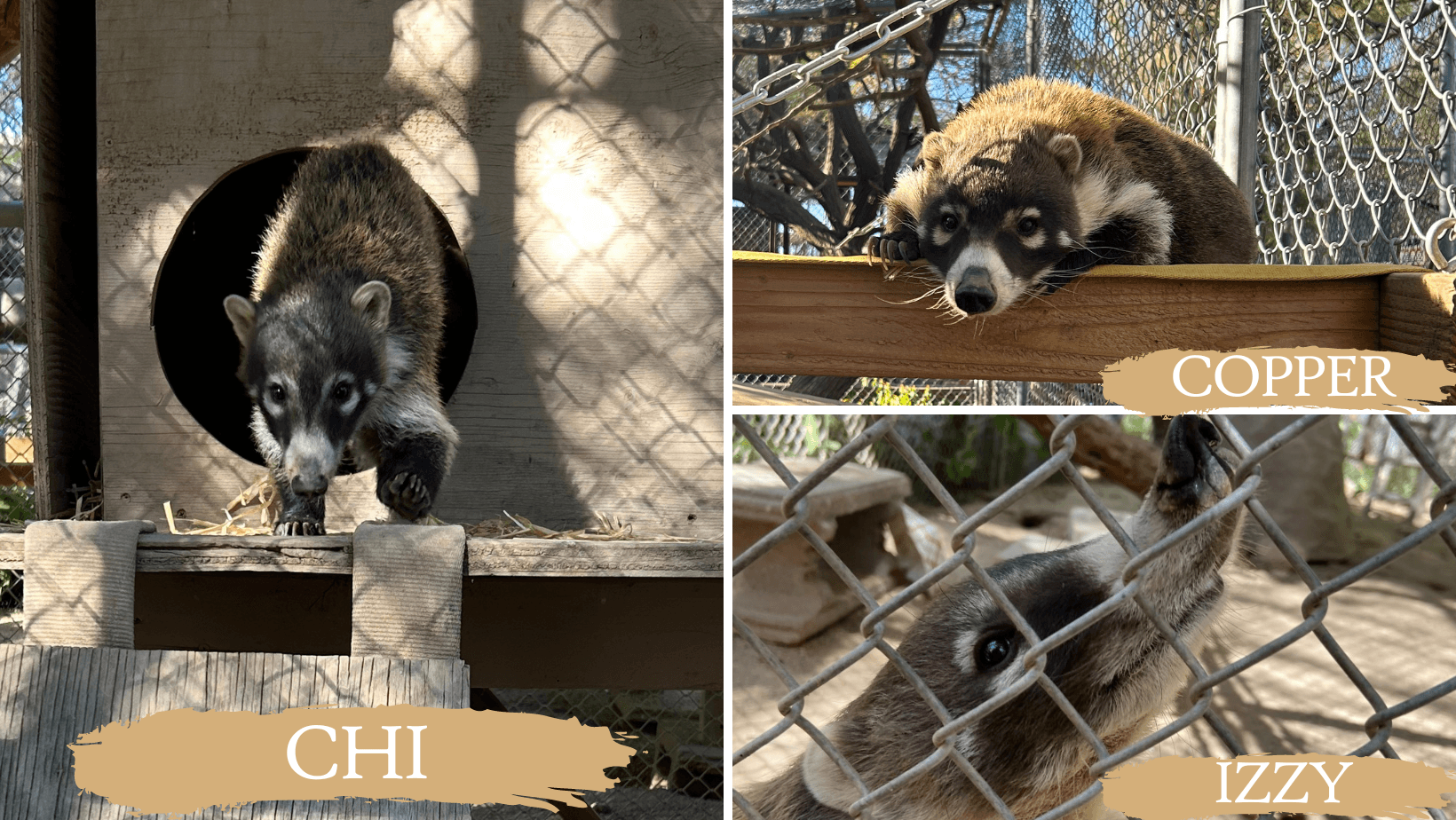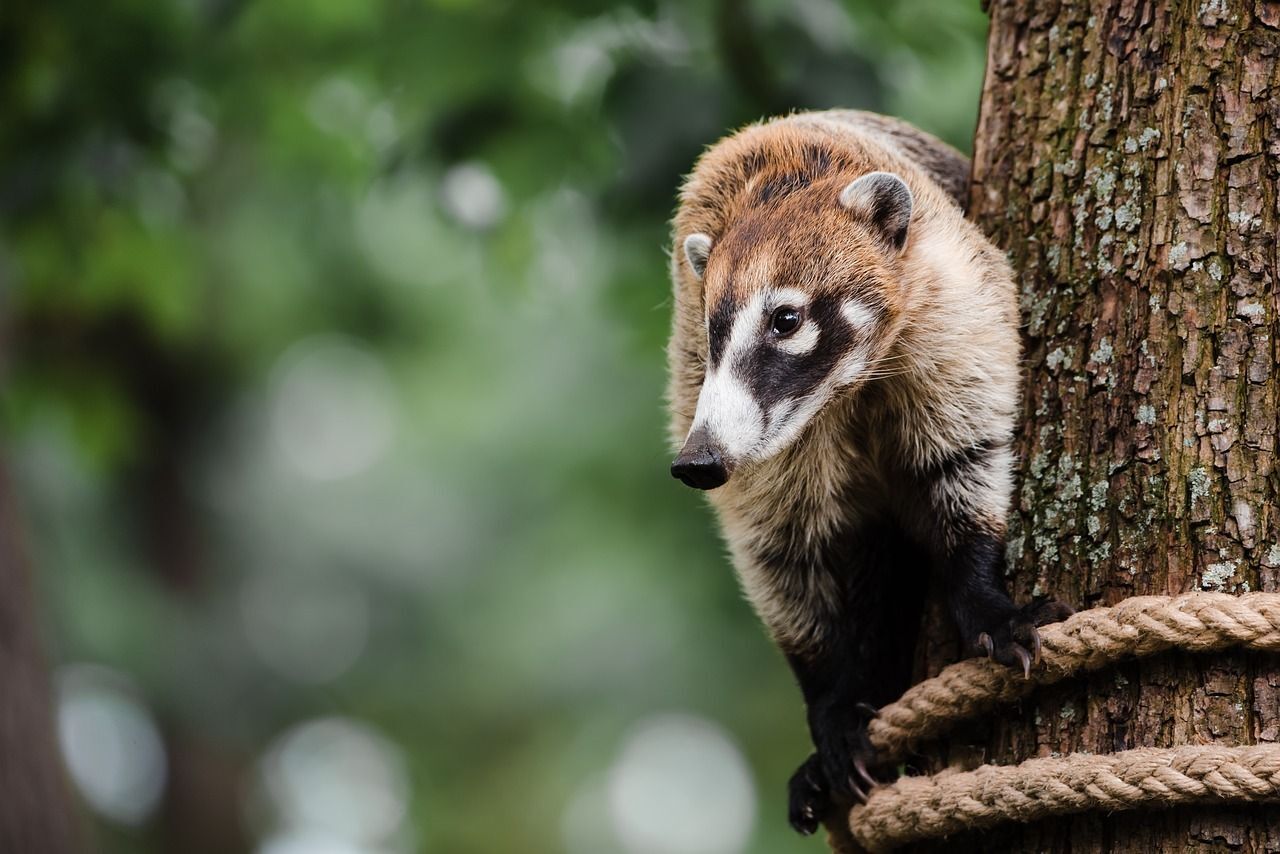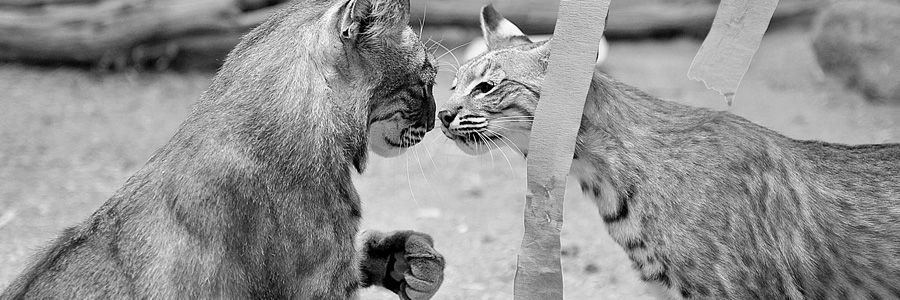COATIMUNDI

Nasua narica
- Habitat: Dry high-altitude forests to tropical lowlands and the desert
- Status: Least concern
- Population Trend: Decreasing
- Diet: Omnivore; highly varied consisting of small vertebrate prey (lizards, rodents, birds, bird eggs), also ground-litter invertebrates like flatworms, roundworms, and grubs
- Weight: 4 - 16 lbs.
- Height: 12" at the shoulder; 13" - 27" long, with a tail almost as long as their body
- Lifespan: 7 years in the wild; up to 16 years in human care
- In the Southwest Wildlife Sanctuary: 3
- Interesting Facts:
- The coatimundis' ankles are double jointed and extremely flexible, enabling them to descend trees head first.
- The term “Coati” means lone coatimundi.
- Coatimundis’ tail is considered nonprehensile. Their tails cannot help them climb trees or hang from branches but is rather for balance as they walk among the trees
THE SOUTHWEST WILDLIFE COATIS



